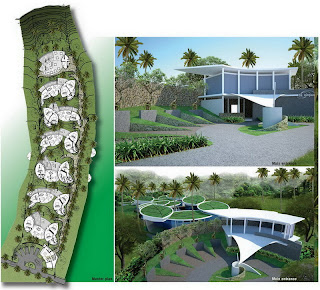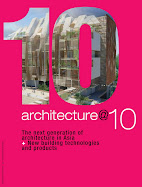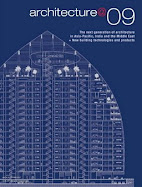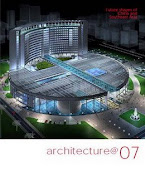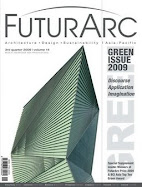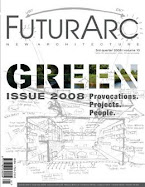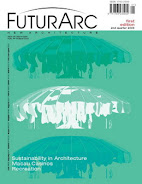An international competition to determine the best design of green buildings for property development sites in Australia, Malaysia and the Philippines.

Architects and students of architecture are invited to submit entries as individuals and in multidisciplinary teams for one or more of three development sites: Bouquet Street - “City South 6” in South Brisbane, Queensland, Australia; Leisure Farm Resort Residences in Iskandar Development Region, Johor, Malaysia; and, Pioneer Park One Project in Mandaluyong City, Metro Manila, the Philippines. Cash and other prizes worth more than SGD50,000 are up for grabs. Entries will close on 15 January 2008.
An international jury of green building experts will determine the winners in professional and student categories. The jury includes Dr. Nirmal Kishnani of Singapore, Professor Kazuo Iwamura of Japan, Dr Chris Luebkeman of the United Kingdom, Dr Deo Prasad of Australia and Bill Valentine of the United States.
The competition is being organized by the FuturArc journal of progressive architecture, published by BCI Asia. Prizes are sponsored by Autodesk.
BCI Asia’s Chairman, Dr Matthias Krups, said: “The facts are well-known, largely undisputed, and devastating: we are systematically destroying our home, the planet we live on. Buildings are a major cause of green-house gas emissions, wastage and pollution, yet today we know that holistic sustainable design can minimize a building’s impact on the environment.
“The FuturArc Prize is the first architectural design competition to seek holistic Green design solutions in the Asia-Pacific region. It aims to become a catalyst for change, a showcase of ideas and solutions for sustainable design. We hope it will also become a platform for talented designers and a launch pad for architectural students who aspire to make a difference,” said Dr Krups.
Awards will be bestowed to winners at the FuturArc Forum series of conferences in Jakarta on 19 February 2008, Singapore on 22 February, Kuala Lumpur on 26 February, Manila on 29 February, Ho Chi Minh City on 14 March, Bangkok on 18 March, Sydney on 27 March, Hong Kong on 8 April and in Shanghai on 11 April.
The FuturArc Prize competition will be paperless with all entries submitted online at www.futurarc.com/prize from 15 October 2007. Jury deliberations will also be done online.
About the jury
Nirmal Kishnani, PhD, is Chief Editor of the FuturArc Journal. He is both an educator and practitioner in the area of Green buildings, presently teaching at the Department of Architecture of the National University of Singapore. He has lectured and written widely on the subject of Greening in Asia and has been a consultant to projects across the region, most recently as head of a sustainability unit operating from Singapore.
Kazuo Iwamura, M.E. is a Professor in the Faculty of Environment and Information studies at the Musashi Institute of Technology in Yokohama Japan and CEO of IWAMURA Atelier Co., Ltd. He is also Chair of ARCASIA’s Committee for Green & Sustainable Architecture, UIA Councilor of Region IV (Asia + Oceania), and Director of the UIA Work Programme Architecture for a Sustainable Future and a member of the board of the World Green Building Council.
Chris Luebkeman, PhD, is Director for Global Foresight and Innovation at the Arup engineering group (www.arup.com), where his role is to explore and synthesize trends affecting society’s development. He is a Senior Fellow of the Design Futures Council and has taught in the departments of architecture at the Swiss Federal Institute of Technology in Zurich, the University of Oregon, and the Chinese University of Hong Kong and at the Massachusetts Institute of Technology.
Deo Prasad, PhD, is Director of the Sustainable Development Program at the University of New South Wales. He has worked on milestone projects including Australia's first solar village, scientific validation of computer simulation tools for energy performance prediction of buildings and related green building assessment tools, advanced performance simulation of buildings using complex modeling software and the Green Olympics projects. He has won an Australian National Innovation Award and the NSW Government 2004 Green Globe Award.
Bill Valentine is Chairman and Design Principal of HOK (www.hok.com), a global architectural design and services firm. A 45-year veteran of HOK, Bill serves as a vocal advocate for sustainability with employees and clients, as well as leading the design of several projects each year. Within the design and construction professions, Bill actively promotes his definition of ‘good design’ as a simple idea, elegantly executed and inspiring, with social significance and in harmony with the environment. A Fellow of the American Institute of Architects, he is a frequent speaker and author on sustainable topics.
About the prize and the promoter
The FuturArc Prize has been established by the BCI Group of Companies through its FuturArc journal to inspire architects and other building professionals to draft innovative designs for Green buildings on sites in Asia-Pacific. The Competition format encourages participants to work as integrated teams in producing holistic Green building solutions. Publicity surrounding the Competition is intended to promote competency in Green building design as well as the importance of Green buildings for the environment. Prize money and other awards are sponsored by Autodesk (www.autodesk.com).
FuturArc Journal is the Competition Organiser whose intent is to promote green building in Southeast Asia, Australia and China. Published by the BCI Group, FuturArc is a quarterly journal recognizing the significant impact of the buildings on society and the environment. FuturArc advocates architecture that demonstrates creativity, social responsibility and sustainability. For more information, visit www.futurarc.com.
Read More.....






